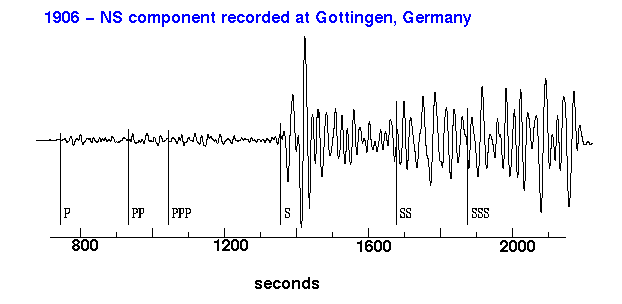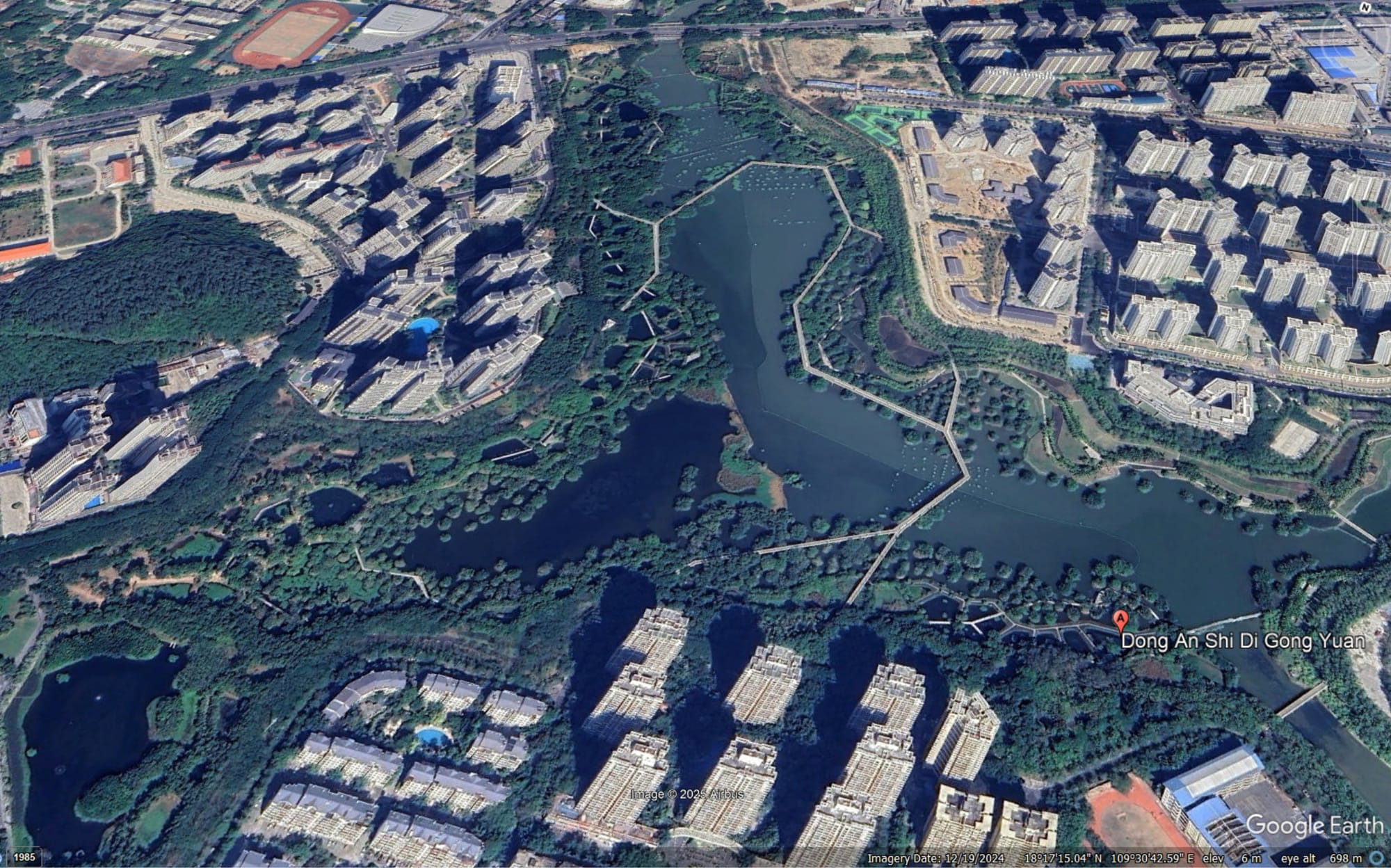Resilience Borne of Disaster
After experiencing disasters, many places around the world are rebuilding to be more resilient in future. We can learn from the experience of others how to assess our local hazards and risks and upgrade our infrastructure, so as to lessen the damage from future events.

At 5:12 AM on April 18, 1906, the earth began shaking violently beneath the city of San Francisco, and it continued to shake for at least a minute, in an earthquake later estimated to be magnitude 7.7 to 7.91. The damage caused by the earthquake was severe, including countless ruptured natural gas lines, over 300 water main breaks, and 23,000 broken water services.2 The worst damage was caused by a huge number of fires fed by broken gas lines. The broken water system meant there was no water to fight the fires, which burned for nearly four days. The US Geological Survey estimates that 3,000 people died, 225,000 were made homeless, and 28,000 buildings were destroyed. The estimated cost of the disaster was $400 million 1906 US dollars, 80% of which was attributable to the fires following the earthquake.3
As devastating as that disaster was, something good came out of it. By 2013, San Francisco had designed and built an Auxiliary Water Supply System (AWSS), specifically for post-earthquake fire fighting. The system has three very large freshwater reservoirs on hilltops connected to a separate system of very robust distribution piping, dedicated hydrants, and dedicated pumps capable of refilling the reservoirs with salt water if the fresh runs out. The AWSS was put to a serious test following the 1989 Loma Prieta earthquake near San Francisco. The AWSS largely did its job. Although the distribution system failed significantly in the infill land in the lower city, notably the Marina district, the reservoirs and piping in the upper city remained intact and supplied water to firefighters.4
This is just one example, perhaps one of the most famous in modern times, of how people have responded to disasters by building infrastructure to make their regions, cities and communities more resilient to future disasters (see Sweet Lighting's “Floods” story5 on how The Netherlands responded centuries ago to massive ocean flooding). While earthquakes are completely beyond our control, the resulting fires are not. We also know that other naturally-occurring weather-driven events - wildfires, heavy rainfalls, storms, hurricanes, tornadoes, floods, heat waves, and drought - are becoming more frequent and more severe due to climate change. Nobody is completely immune. When others re-build and upgrade infrastructure, post-disaster, we all can learn from their efforts how make our own communities more resilient to the future disasters that are sure to await us.
We can’t cover all the work being done, but we can look at a few examples from around the world to get a sense of what is being done after disaster strikes.
Hoboken, New Jersey, USA
Hurricane Sandy in 2012 brought a 4.3 m (14 ft) storm surge to the city of Hoboken, New Jersey which resulted in power outages, significant flood damage, and deaths. As part of a larger state-wide initiative known as Rebuild by Design—Hudson River6, the city built a number of parks that provide recreational amenities and also serve to deal with excess stormwater. One such is ResilienCity Park. Normally home to playing fields and courts, the park can divert stormwater from streets and basements, and retain 76,000 L (2 million US gal) of water, half in an underground tank and the rest in above-ground rain gardens and a cistern. A new 114 million L/day (30 m gal/day) pump can move water from the tanks to the river.7
China’s Sponge Cities
China is proceeding with its Sponge City Initiative, which is on a much, much larger scale than Hoboken. Flooding from heavy rainfall in China is perennial, but it has become worse and more frequent in recent decades, exacerbated by climate change and increasing urbanization, and it has caused increasing damage. In response, China developed a new integrated urban water management concept, known as “Sponge Cities”. Sponge Cities have multiple aims–reducing flooding, restoring groundwater, reducing pollution, reducing urban heat island effects, and restoring degraded environments–mostly with designs and technologies that rely more on nature and less on concrete.8
Implementation began in 2014 by identifying over 600 cities where these concepts could be applied. It is a massive undertaking, with many challenges, most of which are not technical, so they started with a pilot project of 30 cities.9 Dong'an Wetland Park in Sanya City, Hainan Island in China, is one of the showcase Sponge Cities projects. The 68 Ha (168 acres) park reclaims a degraded wetland. The heart of the project is a Y-shaped lake, with newly created islands, and a pond-and-dyke system at its edges to slow and treat run-off from the surrounding city. Trees and other plantings have brought the return of wildlife and provided a green natural experience for residents. The park has even increased property values in the adjacent neighbourhoods.10

Indian State of Odisha
The Indian State of Odisha is located in the Northeast of the country, bordering the Bay of Bengal. The State is unfortunately subject to two cyclone seasons a year. Both the intensity and frequency of cyclones have been increasing in the region, and there have been 11 cyclones over the Bay of Bengal in the last 10 years.11 The 1999 Odisha Super Cyclone brought extremely strong winds, heavy rains, storm surges, and flooding, which led to 8,000 deaths, damage to all infrastructure, collapse of power and communication grids, and loss of livelihoods.
India’s approach to disaster management and recovery fundamentally changed following the Odisha Cyclone disaster, to one that emphasized preparedness and mitigation instead of reactive relief. Early warning systems were enhanced and extended to formerly hard-to-reach rural areas. Odisha State constructed over 300 multi-purpose cyclone shelters (schools and community centres in non-storm times). Transportation infrastructure was rebuilt to ensure critical routes would remain open. Power and communication networks were also made more robust, with more built-in redundancies.12 Response protocols changed significantly, including plans for evacuations. Planning was substantially decentralized, and included local communities and NGOs.13
In 2013, when another Category 5 cyclone, Cyclone Phailin, struck Odisha, the measures taken since 1999 were put to the test. Early warnings and mass evacuations of the most vulnerable areas meant that only 45 people died, although there was still significant property damage.14 This was widely considered to be vindication of the changes made, although lessons learned produced recommendations for improvement.
Wildfire
Resilience improvements following wildfires seem to be equally as complex as those for disasters caused by wind and water. A prime reason seems to be that we humans like to live in or near forests. When those forests dry out and catch fire, our buildings and other infrastructure are on the front line.
Lytton, British Columbia, Canada
On the last day of June, 2021, following a day which saw the highest ever recorded temperature in Canada (49 degC, 120 degF), a wildfire of unknown cause broke out adjacent to a railway siding. Burning embers blew into the nearby village of Lytton, British Columbia, Canada. The subsequent fire in the town destroyed 90% of all its structures in less than half an hour, and killed two people. Rebuilding of the town has finally begun, under the auspices of a national program set up to build back better.15 Homes being rebuilt with funding from the program must comply with a checklist of fire-resistant construction requirements, which consist largely of choosing all non-flammable exterior materials, along with many details to ensure that there are no places for burning embers to lodge.16
Marysville, Victoria, Australia
On February 7th, 2009, the town of Marysville, Victoria, Australia, lost 90% of its structures in a bush fire that became known as Black Saturday. Following the fire, experts recommended not rebuilding the town, citing risk factors of dense surrounding forests, limited escape routes, and unpredictable wind patterns common to the region. The town rebuilt anyway, but under more-stringent fire-resistant building codes. Similar to Lytton, these codes include requirements for the use of non-flammable construction materials and specific design features to reduce ember penetration, with the addition of a minimum “defendable space” between homes and vegetation, and fixed water supply requirements.17
Pacific Palisades, Los Angeles
How well do these kinds of design changes work? The recent devastating Pacific Palisades and Malibu wildfires, in which more than 1,200 structures were destroyed, may provide an answer, as a few homes survived when all around them burnt. One house in particular has been cited as an example. Built in 2024, the house has all the features common to fire-resistant codes–non-flammable exterior materials, no place for embers to take hold, tempered glass windows, minimal landscaping, and other key details.18 Although this example is a very small sample size, the clear implication is that these features work.
Must we wait for a disaster to strike to fully appreciate the risks, and to spur needed changes to our infrastructure? The world is paying increasing attention to both post-disaster rebuilding for resilience and to making proactive changes. For example, the United Nations has an entire agency, the UN Office for Disaster Risk Reduction (UNDRR), dedicated, in their words, to “switching the focus from managing disasters to managing risk”.19 One of the key ideas common to all work on increasing the resilience of infrastructure seems to be a shift from thinking that natural disasters are unpreventable to recognizing that natural hazards exist, but that hazards needn’t result in disasters if we have robust and appropriate infrastructure.
In addition, the data surrounding historical conditions–temperature, rainfall, severe storm return periods, strength, severity and length of droughts–can no longer be used to forecast future conditions as a basis for design.20 Better modelling will be crucial as we build or rebuild for the future.
Reading
1. “The Great 1906 San Francisco Earthquake.” Accessed May 4, 2025. https://earthquake.usgs.gov/earthquakes/events/1906calif/18april/.
2. “San Francisco Fire Dept. Auxiliary Water Supply System.” Accessed May 4, 2025. https://sfmuseum.org/quake/awss2.html.
3. USGS, “The Great 1906 San Francisco Earthquake.”, op.cit.
4. SF Museum, “San Francisco Fire Dept. Auxiliary Water Supply System.” , op. cit
5. Sweet Lightning. “Flooding,” April 2, 2025. https://sweetlightning.ghost.io/flooding/.
6. Rebuild by Design Projects and Stormwater Infrastructure Toolkit. “NJDEP| Rebuild by Design Projects and Stormwater Infrastructure Toolkit | Rebuild By Design Hudson River.” Accessed May 6, 2025. https://dep.nj.gov/floodresilience/rebuild-by-design-hudson-river/.
7. jnguye60. “ResilienCity Park Case Story (Hoboken, NJ).” Local Infrastructure Hub (blog), October 10, 2023. https://localinfrastructure.org/resources/resiliencity-park-case-story-hoboken-nj/.
8. Gill, Daisy. “Sponge City Concepts Could Be The Answer to China’s Impending Water Crisis.” Earth.Org, August 30, 2021. https://earth.org/sponge-cities-could-be-the-answer-to-impending-water-crisis-in-china/.
9. Chikhi, Faiza, Chuangcheng Li, Qunfeng Ji, and Xilin Zhou. “Review of Sponge City Implementation in China: Performance and Policy.” Water Science and Technology 88, no. 10 (October 24, 2023): 2499-2520. https://doi.org/10.2166/wst.2023.312.
10. “Turenscape - Sanya Dong’an Wetland Park.” Accessed May 9, 2025. https://www.turenscape.com/en/project/detail/4719.html.
11. Swain, Gagan B. “Disaster Resilient Study in Odisha,” PDF, accessed 06 May 2025, https://driconnect.cdri.world/images/resources/Gagan_Draft_PPT_Learning_from_Odisha_Power_Sector_Study_QICG_CDRI_04062024._504904246.pdf
12. “Impact and Lessons from the Orissa Super Cyclonic Storm of 1999 • Disaster.Shiksha,” January 7, 2025. https://disaster.shiksha/natural-disasters/orissa-super-cyclonic-storm-1999-impact-lessons/.
13. India, Ideas For. “The ‘Odisha Model’ for Disaster Resilience.” Ideas For India. Accessed May 6, 2025. http://www.ideasforindia.in/topics/productivity-innovation/the-odisha-model-for-disaster-resilience.html.
14. “Impact and Lessons from the Orissa Super Cyclonic Storm of 1999 • Disaster.Shiksha,”, op. cit.
15. “Lytton Homeowner Resilient Rebuild Program,” May 31, 2023. https://www.canada.ca/en/pacific-economic-development/services/funding/lytton/homeowner.html.
16. LHRR-Program-Fire-Resilient-Checklist_Version-1.2.pdf, accessed 11 May 2025, https://www.lytton.ca/sites/23/files/2024-08/LHRR-Program-Fire-Resilient-Checklist_Version-1.2.pdf
17. “Marysville’s Resilience: Rebuilding After Black Saturday Fires -,” February 23, 2025. https://farmonaut.com/australia/marysvilles-resilience-rebuilding-a-sustainable-australian-town-after-black-saturday-bushfire-disaster.
18. Capps, Kriston. “These Homes Withstood the LA Fires. Architects Explain Why.” Bloomberg.Com, January 13, 2025. https://www.bloomberg.com/news/articles/2025-01-13/los-angeles-wildfires-why-these-homes-didn-t-burn.
19. “Our Work,” March 9, 2023. https://www.undrr.org/our-work.
20. ClimateData.ca. “Guidance on Using Future Climate Data for Building Performance Simulation.” Accessed May 12, 2025. https://climatedata.ca/resource/guidance-on-using-future-climate-data-for-building-performance-simulation/.